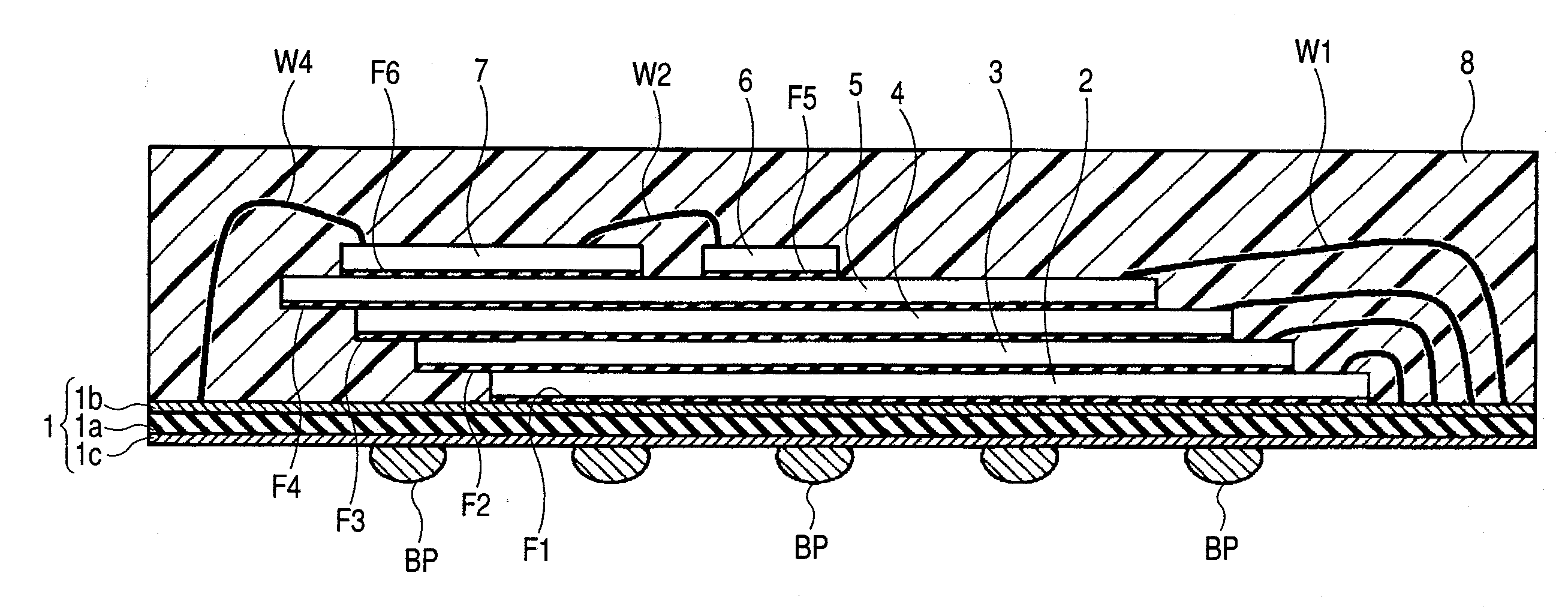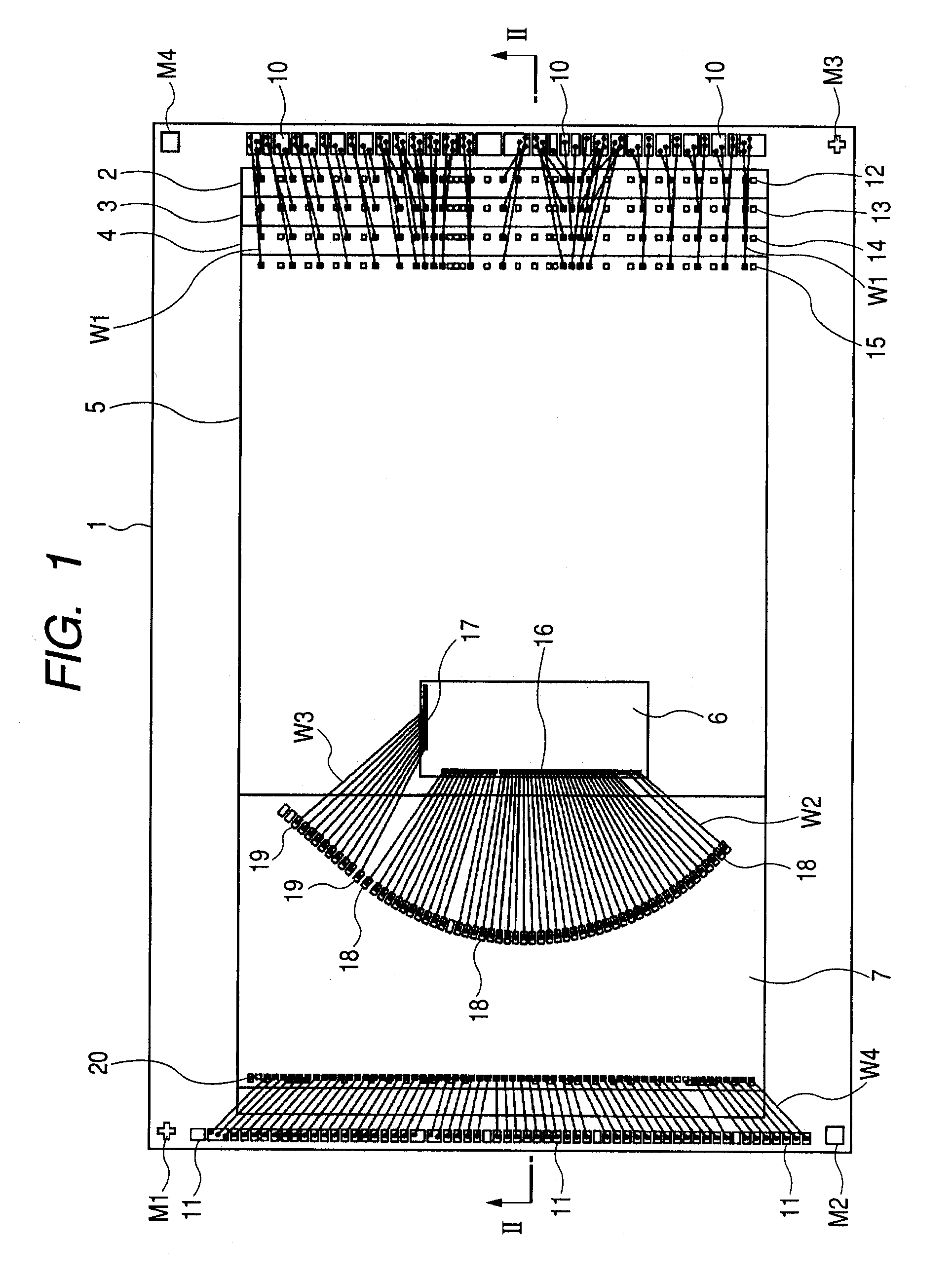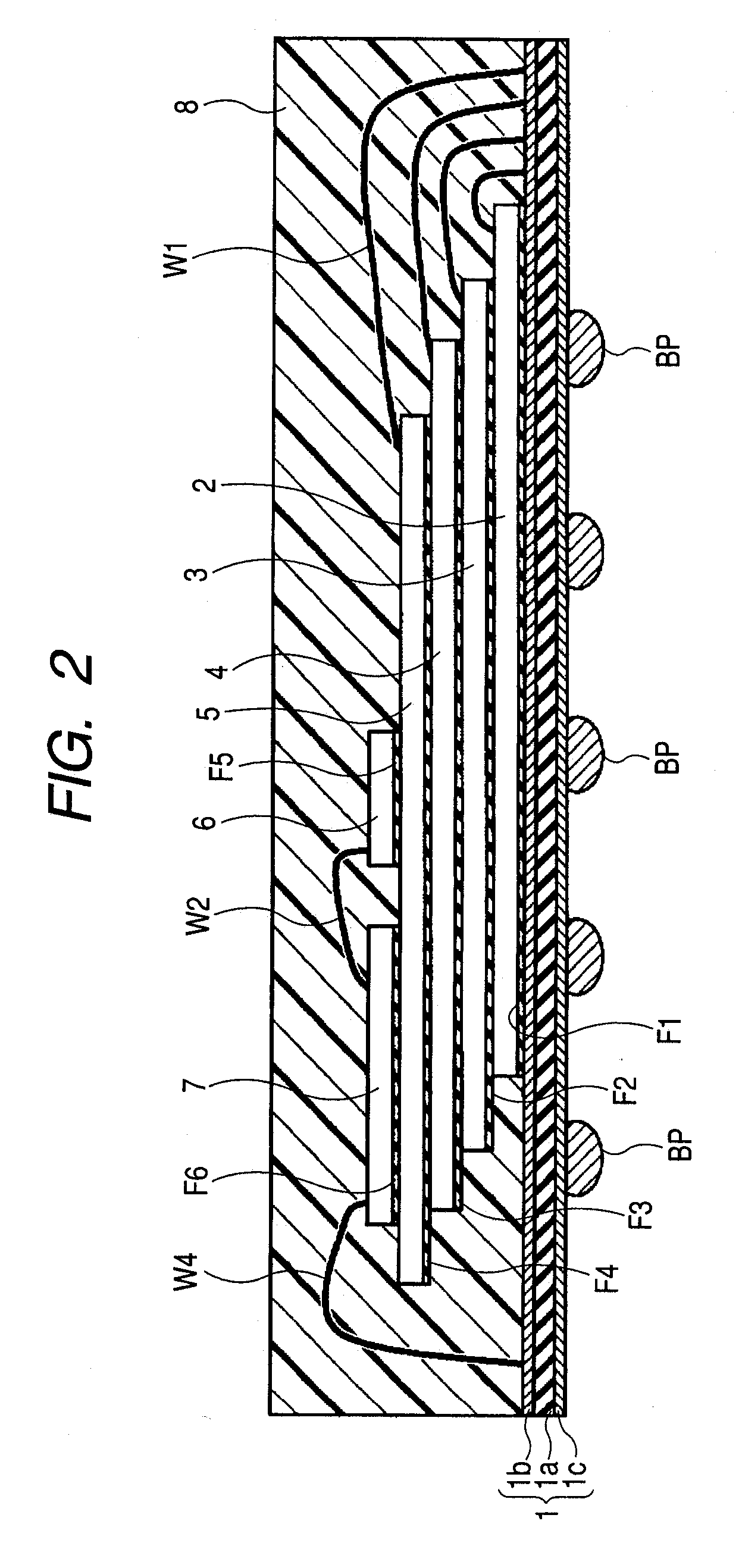Semiconductor device, interposer chip and manufacturing method of semiconductor device
a manufacturing method and semiconductor technology, applied in semiconductor devices, semiconductor/solid-state device details, electrical devices, etc., can solve problems such as defective units, failure of bonding wires, and inability to easily contact the burr of the end face of microcomputer chips, etc., to achieve stably the effect of performan
- Summary
- Abstract
- Description
- Claims
- Application Information
AI Technical Summary
Benefits of technology
Problems solved by technology
Method used
Image
Examples
embodiment 1
[0050]FIG. 1 is a plan view showing the structure of the semiconductor device by this embodiment of the invention 1, and FIG. 2 is an II-II line cross-sectional view of FIG. 1. In FIG. 1 and FIG. 2, this semiconductor device is a SIP of the stack structure which stacked memory chips 2-5 of four sheets, and microcomputer chip 6 on the front surface of wiring substrate 1, mounted interposer chip 7 on the front surface of memory chip 5 adjoining microcomputer chip 6, and was sealed with mold resin 8. Wiring substrate 1, memory chips 2-5, microcomputer chip 6, and interposer chip 7 are being mutually fixed with adhesive films F1-F6.
[0051]Each of wiring substrate 1, memory chips 2-5, microcomputer chip 6, and interposer chip 7 is formed in the rectangle. A plurality of bonding pads (electrode) 10 for memory chips 2-5 and a plurality of bonding pads 11 for interposer chip 7 are formed in the front surface of wiring substrate 1. A plurality of bonding pads 10 are arranged in predetermined ...
embodiment 2
[0088]As FIG. 2 showed, in this semiconductor device, wiring substrate 1, memory chips 2-5, microcomputer chip 6, and interposer chip 7 are being mutually fixed with adhesive films F1-F6.
[0089]FIGS. 10A to 10E are drawings showing the step which sticks adhesive film F1 on the back surface of memory chip 2. First, as shown in FIG. 10A, a plurality of memory circuits are formed in the front surface of silicon wafer 50 of thickness 600 μm at matrix form. Next, as shown in FIG. 10B, the back surface of silicon wafer 50 is shaved and silicon wafer 51 of thickness 90 μm is produced. Subsequently, as shown in FIG. 10C, adhesive film F is stuck on the whole back surface of silicon wafer 51. Next, as shown in FIG. 10D, dicing tape 53 is stuck on the front surface of stage 52, and silicon wafer 51 is stuck on the front surface via adhesive film F. A dicing blade (not shown) cuts silicon wafer 51 and adhesive film F vertically and horizontally, and a plurality of memory chips 2 in which each i...
embodiment 3
[0093]As FIG. 2 showed, in this semiconductor device, memory chips 2-5 of four sheets are loaded into the front surface of wiring substrate 1, microcomputer chip 6 and interposer chip 7 are mounted in the front surface of memory chip 5, and these are being mutually fixed with adhesive films F1-F6. For this reason, there is a problem that thickness is large in this semiconductor device. Then, it tried to make thickness of a semiconductor device small by making below 10 μm thickness of adhesive films F1-F6 which were about 20 μm conventionally. However, irregularity of about 6-10 μm is shown in the front surface of wiring substrate 1, and in adhesive film F1 of thickness 10 μm, the irregularity cannot be absorbed but a void remains between the under surface of adhesive film F1, and the front surface of wiring substrate 1. In making below 10 μm thickness of adhesive film F1 pasted up on wiring substrate 1, wiring substrate 1 that the difference of the average height on the front surfac...
PUM
 Login to View More
Login to View More Abstract
Description
Claims
Application Information
 Login to View More
Login to View More - R&D
- Intellectual Property
- Life Sciences
- Materials
- Tech Scout
- Unparalleled Data Quality
- Higher Quality Content
- 60% Fewer Hallucinations
Browse by: Latest US Patents, China's latest patents, Technical Efficacy Thesaurus, Application Domain, Technology Topic, Popular Technical Reports.
© 2025 PatSnap. All rights reserved.Legal|Privacy policy|Modern Slavery Act Transparency Statement|Sitemap|About US| Contact US: help@patsnap.com



